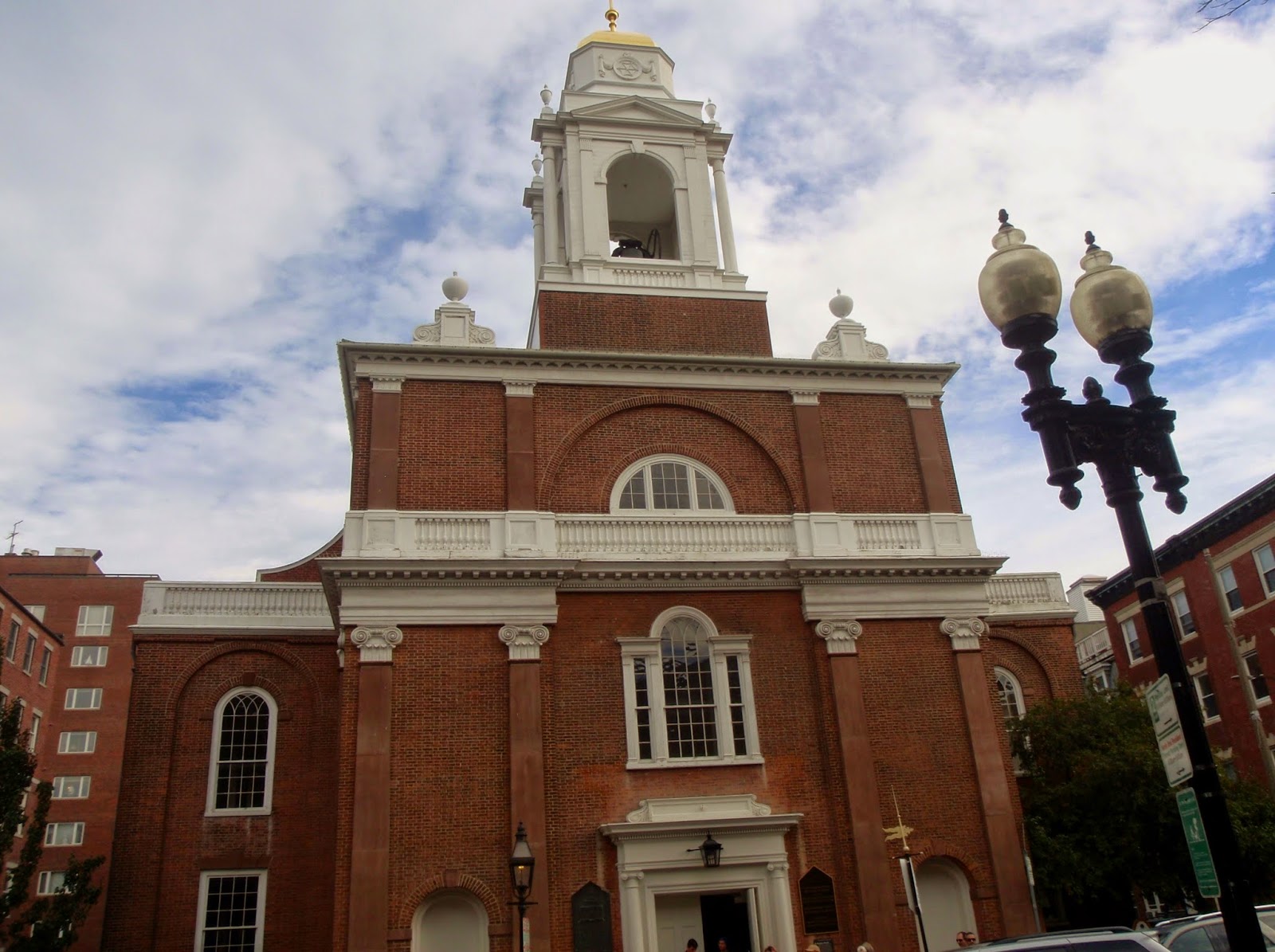Boston, Massachusetts
September 29, 2014
We decided to walk the Freedom Trail while in Boston. The Freedom Trail is a 2 1/2 mile tour that highlights people, events, and places during the American Revolution.
The trail is well marked by bricks, placards, and signs so one may start at any point. However, most tourists start at the Boston Common where one may obtain maps, water, etc.
New State House, built in 1798, is located on the top of Beacon Hill. The land was once owned by John Hancock. The dome was originally made out of wood shingles but a copper sheath covered by 23 karat gold was added to prevent leaks into the State House.
The part of Boston that we visited was a constant contrast of old and new.
Ben Franklin statue marks the entrance to the site of the first public school in America. Four signers of the Declaration of Independence attended the school: Benjamin Franklin, Samuel Adams, John Hancock, and Robert Treat Paine. Interestingly, Franklin never graduated.
Which is more stubborn? I vote for the one on the right.
Old and new.
The red brick building is the Old State House. It was here that the Declaration of Independence was first read to the Massachusetts public from the balcony (under the flag) in 1776. Just outside the State House is a circle of cobblestones that commemorates the Boston Massacre, when tensions between colonists and British soldiers erupted, resulting in the death of five members of the colonies.
Faneuil Hall. The building hosted America's first town meeting and became a landmark for expressing discontent over Royal oppression. It was here that Bostonians protested, "no taxation without representation."
The former home of Paul Revere (made famous by Rush Limbaugh) is the oldest building in downtown Boston (built in 1680). Revere is famous for his midnight ride to Lexington, informing that the British were coming.
Sacred Heart Italian Church in 1833 served as a seaman's church. Among the worshipers there were Herman Melville, author of Moby Dick, Charles Dickens, Walt Whitman, and Ralph Waldo Emerson.
In 1884, a group of Italian immigrants purchased the building and in 1888, it was named the Sacred Heart. Now it is known as the Sacred Heart Italian Church.
Statue of Paul Revere close to the Old North Church. I had to add this picture as one time an acquaintance said that I really didn't take a blog's pictures because he never saw a picture of Christine or me. Well, we were there.
Saint Stephen's.
In 1774, the church was the Middle Street Meeting House; serving the New North Congregational Society, of which Paul Revere and his father were members. In 1862, the Catholic Archdiocese of Boston acquired the church and renamed it Saint Stephen's.
The Old North Church.
Atop the church is where Robert Newman held two lanterns as a signal to Paul Revere that the British were coming by sea, not land. Thus the phrase: “One if by land, two if by sea,” and the beginning of the American Revolution.
Inside the church, the "pews" were cubicles that held a family unit. (And you think we are odd for sitting in the same pew every Sunday.) The cubicles had the family names as markers. The enclosures helped to diminish wicked drafts.
Plaque inside commemorating Major John Pitcairn. Hope you can read it.
Back in the days when the pulpits were high above the congregation.
Church organ pipes. Would loved to have heard the organ being played.
The Newman Window.
The window through which Robert Newman left the church after displaying the two signal lanterns on April 18, 1775. It holds the "Third Lantern" lit by President Ford on April 18, 1975. The third lantern was introduced as a new signal to call the nation to renewed effort and renewed hope in our Third Century.
May it burn brightly.



























































